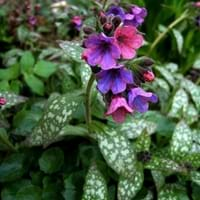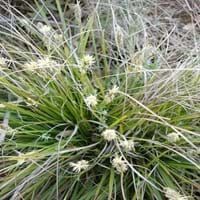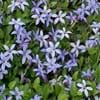Life Span
Perennial
Perennial
Type
Perennial
Sedge or Rush
Origin
Southern Europe
Japan
Types
Bigleaf hydrangea, Hortensia, Smooth hydrangea, Oakleaf hydrangea, Annabelle
Narrow sedge
Number of Varieties
Not Available
Habitat
Forest edges, Hillside, Woods
Boggy areas, ditches, marshes, riparian zones, stream banks, Tropical regions, Wet forest
USDA Hardiness Zone
4-8
6-9
Sunset Zone
1a, 1b, 2a, 2b, 3a, 3b, 4, 5, 6, 7, 8, 9, 14, 15, 16, 17
3a, 3b, 4, 5, 6, 7, 8, 9, 14, 15, 16, 17, 18, 19, 20, 21, 22, 23, 24
Habit
Cushion/Mound-forming
Arching/Fountain-shaped
Flower Color
White, Red, Pink, Violet
Brown
Flower Color Modifier
Bicolor
Bicolor
Fruit Color
Brown
Not Available
Leaf Color in Spring
White, Green, Silver
Dark Green, Light Yellow
Leaf Color in Summer
White, Green, Silver
Dark Green, Light Yellow
Leaf Color in Fall
White, Green, Silver
Dark Green, Light Yellow
Leaf Color in Winter
Light Green
Dark Green, Light Yellow
Leaf Shape
Oblovate
Long Linear
Plant Season
Spring, Summer, Fall
Spring, Summer, Fall, Winter
Sunlight
Partial Sun, Partial shade, Full Shade
Partial Sun, Partial shade
Type of Soil
Clay, Loam
Clay, Loam, Sand
The pH of Soil
Acidic, Neutral, Alkaline
Acidic, Neutral, Alkaline
Soil Drainage
Average
Well drained
Bloom Time
Early Spring, Spring, Late Winter
Spring
Tolerances
Drought
Drought, Heat Tolerance
Where to Plant?
Container, Ground
Container, Ground, Pot
How to Plant?
Seedlings, Stem Planting
Seedlings
Plant Maintenance
Medium
Low
Watering Requirements
Not Available
Average Water Needs, Do Not over Water, Never Over-water, Prefer drip-irrigation instead of Over-head watering, Requires regular watering
In Summer
Average Water
Ample Water
In Spring
Moderate
Ample Water
In Winter
Average Water
Average Water
Soil pH
Acidic, Neutral, Alkaline
Acidic, Neutral, Alkaline
Soil Type
Clay, Loam
Clay, Loam, Sand
Soil Drainage Capacity
Average
Well drained
Sun Exposure
Partial Sun, Partial shade, Full Shade
Partial Sun, Partial shade
Pruning
Remove damaged leaves, Remove dead branches, Remove dead leaves
Remove damaged leaves, Remove dead leaves
Fertilizers
All-Purpose Liquid Fertilizer
organic fertlizers, very little fertilizers at a time, Water soluble fertilizers
Pests and Diseases
Red blotch
Aphids, Mealybugs, Red blotch, Scale, Slugs
Plant Tolerance
Drought
Dry Conditions, Heat Tolerance
Flowers
Showy
Insignificant
Flower Petal Number
Single
Single
Foliage Texture
Medium
Fine
Foliage Sheen
Matte
Glossy
Evergreen
Semi-Evergreen
No
Attracts
Hummingbirds
Insects, Mealybugs
Allergy
Chest tightness, Diarrhea, Dizziness, Nausea, Vomiting
Asthma
Aesthetic Uses
Not Available
Beautification, Borders, Cottage Garden, Landscape Designing, Showy Purposes
Beauty Benefits
Not Available
No Beauty Benefits
Edible Uses
Not Available
Yes
Environmental Uses
Air purification
Air purification, Food for insects, Shelter for wildlife, Versatility, Wildlife
Medicinal Uses
Fever, Kidney problems, Urinary tract problems
Diuretic
Part of Plant Used
Flowers, Root
Leaves
Other Uses
Not Available
Decoration Purposes, Showy Purposes, Used as Ornamental plant
Used As Indoor Plant
Not Available
Yes
Used As Outdoor Plant
Yes
Yes
Garden Design
Bedding Plant, Edging, Groundcover, Mixed Border, Wildflower
Container, Edging, Foundation, Groundcover, Mixed Border
Botanical Name
PULMONARIA saccharata
CAREX oshimensis 'Supergold'
Common Name
Bethlehem Sage
Sedge
In Hindi
Hydrangea
evergold Sedge
In German
Hortensie
Evergold Segge
In French
Hortensia
Evergold carex
In Spanish
Hortensia
Evergold juncia
In Greek
υδραγεία
evergold σπαθόχορτο
In Portuguese
Hortênsia
Evergold Sedge
In Polish
Hortensja
Evergold turzyca
In Latin
Hibiscus
evergold Sedge
Phylum
Not Available
Tracheophyta
Class
Not Available
Liliopsida
Order
Not Available
Poales
Family
Boraginaceae
Cyperaceae
Genus
Not Available
Carex
Clade
Not Available
Angiosperms, Commelinids, Monocots
Tribe
Not Available
Cariceae
Subfamily
Not Available
Cyperoideae
Number of Species
Not Available
Season and Care of Bethlehem Sage and Evergold Sedge
Season and care of Bethlehem Sage and Evergold Sedge is important to know. While considering everything about Bethlehem Sage and Evergold Sedge Care, growing season is an essential factor. Bethlehem Sage season is Spring, Summer and Fall and Evergold Sedge season is Spring, Summer and Fall. The type of soil for Bethlehem Sage is Clay, Loam and for Evergold Sedge is Clay, Loam, Sand while the PH of soil for Bethlehem Sage is Acidic, Neutral, Alkaline and for Evergold Sedge is Acidic, Neutral, Alkaline.
Bethlehem Sage and Evergold Sedge Physical Information
Bethlehem Sage and Evergold Sedge physical information is very important for comparison. Bethlehem Sage height is 30.50 cm and width 45.70 cm whereas Evergold Sedge height is 25.40 cm and width 30.50 cm. The color specification of Bethlehem Sage and Evergold Sedge are as follows:
Bethlehem Sage flower color: White, Red, Pink and Violet
Bethlehem Sage leaf color: White, Green and Silver
Evergold Sedge flower color: Brown
- Evergold Sedge leaf color: Dark Green and Light Yellow
Care of Bethlehem Sage and Evergold Sedge
Care of Bethlehem Sage and Evergold Sedge include pruning, fertilizers, watering etc. Bethlehem Sage pruning is done Remove damaged leaves, Remove dead branches and Remove dead leaves and Evergold Sedge pruning is done Remove damaged leaves and Remove dead leaves. In summer Bethlehem Sage needs Average Water and in winter, it needs Average Water. Whereas, in summer Evergold Sedge needs Ample Water and in winter, it needs Average Water.




